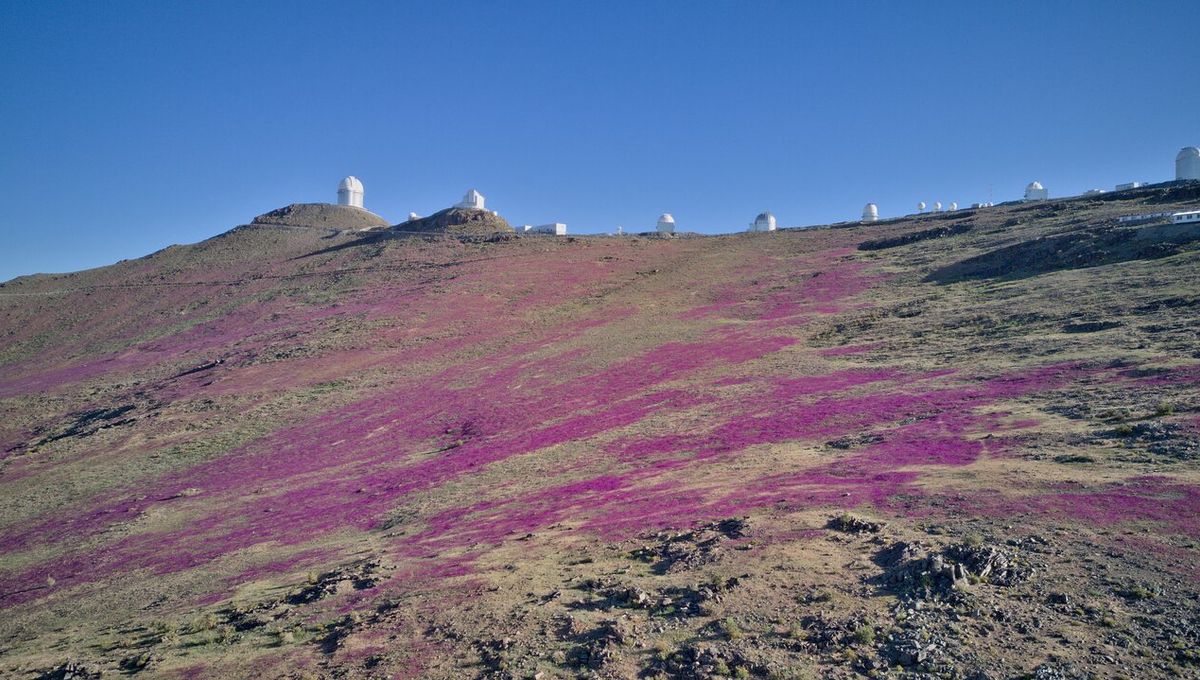
Chile’s Atacama Desert – the driest nonpolar desert on the planet – is currently blanketed in swathes of pretty purple flowers. It may seem strange for plant life to bloom in such a hostile place, but, stranger still, it is happening in the dead of winter, several months earlier than anticipated.
The phenomenon is known as “desierto florido” (the flowering desert), and it occurs every few years, carpeting the desert with flowers. The usually sandy, rocky, and barren landscape is transformed into a garden of 200 different species of pink, purple, and yellow blooms that span hundreds of kilometers.
The event usually happens between September and November – springtime in Chile – when rainfall, temperature, and sunlight join forces to awaken dormant desert seeds. But this current bloom is unseasonably early – it’s currently the middle of winter in the Southern Hemisphere – and that is down to El Niño.
El Niño, and its counterpart La Niña, are the extreme phases of the El Niño-Southern Oscillation (ENSO) cycle – a recurring climate pattern that describes how changes in the water temperature in the Pacific Ocean have a global impact on the world. Everything from wind, temperature, and rainfall patterns to the intensity of hurricane seasons is affected.
During El Niño – the “warm phase” of the ENSO – ocean surface temperature rises in the central and eastern tropical Pacific Ocean. This coincides with an increase in rainfall, explaining the recent heavy rains in the Atacama Desert that have caused flowers to spring to life.
The blooms are not yet sufficient in number to be considered “desierto florido”, Cesar Pizarro, head of biodiversity conservation for the National Forestry Corporation (CONAF), an organization run by the Chilean government, told Reuters. But with more rain expected, they are likely to spread over a larger area. “In the meantime, we have to wait,” Pizarro said.
The Atacama is the driest nonpolar desert – but not the driest place on Earth, that title belongs to somewhere you might not expect – receiving just 1 to 3 millimeters (0.04 to 0.1 inches) of precipitation per year in some places. But that hasn’t stopped life from thriving there.
Over the past 40 years, around 15 blooming events have taken place. The last time it happened this early, according to Reuters, was in 2015.
In 2022, the Chilean government announced the creation of a new national park in the province of Copiapó, in an effort to protect these spectacular displays along with the wildlife they help support.
Source Link: Earth's Driest Hot Desert Just Turned Purple In Rare Winter Bloom